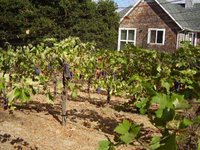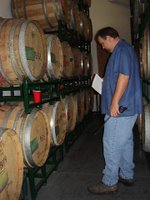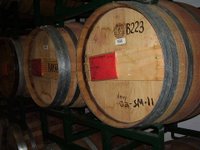One thing I never expected making wine was how hard it would be to get opinions from people on the wine. It seems people don't want to hurt anyone's feelings or say anything bad or maybe bruise an ego. It seems so many people making wine have egos out of context with reality, maybe that's why getting feedback is hard.
But here's the deal. There's no such thing as "handcrafting" a wine. You can't really craft anything about wine. It's not something you can just deconstruct and put back together if you don't like the way it is coming out.
The truth is winemaking is you make a lot of little choices all through the life of the vine and the wine trying to get an end product you like. How much do I prune, how many bunches do I leave, do I weedwhack or use Round Up, Sulfur or Eagle, do I totally crush or use whole berries, how long until I press, how hard do I press, what kind of oak, new oak or old, do I blend the wine, do I rack it? All things you have to choose on. Each one effects the outcome. But it's very hard. They all work together, and none of the results are immediate. You have to wait and see how it comes out.
With the Syrah last year I planned on using 25-50% whole clusters. But the grapes came in and I tasted the stems and inspected them and said, "No 100% destem. The stems are not ripe, I don't want them in my wine." I had no idea how that choice would work out. Would it be right, would it be wrong, did I do the right thing? It turns out it was the right thing. Crushpad made a barrel with the same fruit after me and left 50% whole clusters. I tasted that wine in June and it was scared with a stemmy green streak and high acidity. But I didn't know I had made the right choice until then.
So I want honest opinions about our wine. Even if it's a critical, and even if it's negative. It's the only way I can judge if the choices I've made are turning out right, and knowing that is the only way I know to make changes for the next harvest.
Not enough color? I can do thing different this year to get more color. Not enough fruit? I can make changes.
It's not going to hurt my feelings, I want to make better wine every single year, every single time I make it. I want to keep improving, keep making changes and keep making better choices. When it's 35 degrees and raining and I'm out pruning, I want to make sure I'm doing it honestly to get better grapes, and when it's hour 18 of a 20 hour day of crush I want to make the right call at the crusher. I can only do that if I hear from people how the finished product is coming out.
So as the barrel samples start coming out, and the wine heads to bottle, I want to hear what you think. Tell me, I'll make it even better next time and you won't hurt my ego, I promise.




















